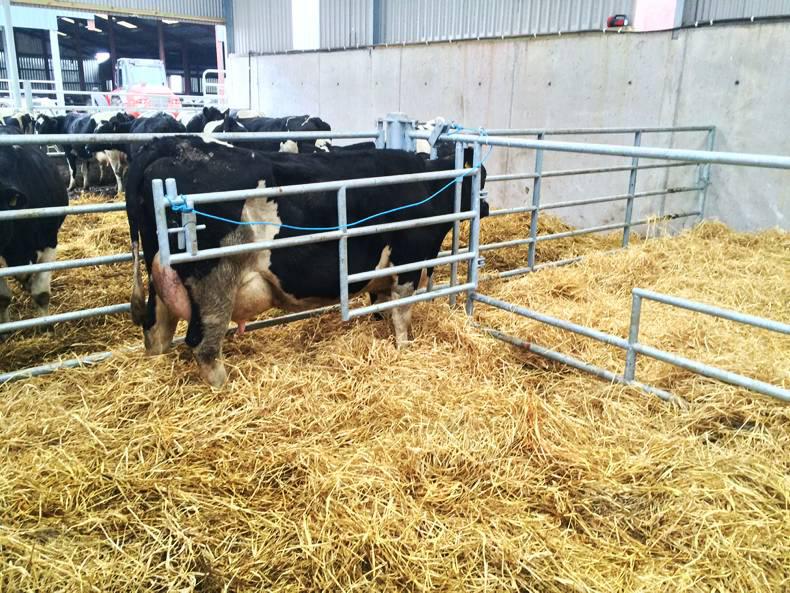An important requirement is quick release of the headgate at the top and bottom. You also want minimum size of tubing so that the gate can withstand the push of a big animal. One vet recently explained to the Irish Farmers Journal what he likes in a gate.
“The head gate must be quick-release. A cow will choke in minutes and it can be very hard to get a big, heavy cow back standing up,” he said. “I prefer to have the calving gate positioned against another gate, not against a wall. That’s for easier operation of a calving jack. A caesarean gate within the main gate is useful. The calving gate should be hung high enough to allow a calf to suck, even with build-up of straw. The gate should be held closed on the cow with a strong chain, which should be above the back. Where the chain is lower and a cow goes down while the vet has his arm inside, the vets arm can be broken. On the other hand, with the chain on top, the animal is free to back out until the headlock gate prevents her going back any further. Don’t make calving pens too big because it can be difficult to get a cow in the head gate – she has room to beat you. Telescopic gates help.”
Most calving gates have a three-in-one design, with: a quick-release head gate; a hinged inner gate, which swings closed on the cow as she is driven into the head gate, and is then tied closed; a small caesarean gate.
Most gates are slanted up at the end to allow a calf to suck, or else have a separate gate for this purpose. Gates vary in the diameter of tubing used while some are telescopic and some have a more elaborate head gate arrangement. Roughly what price – range but about €500 including VAT. Who makes them? Three of the main players are: Gibney Steel Products. Gibney Steel Products sells through co-ops and farm shops. Condon Engineering and O’Donovan Engineering from Cork.






 This is a subscriber-only article
This is a subscriber-only article











SHARING OPTIONS: